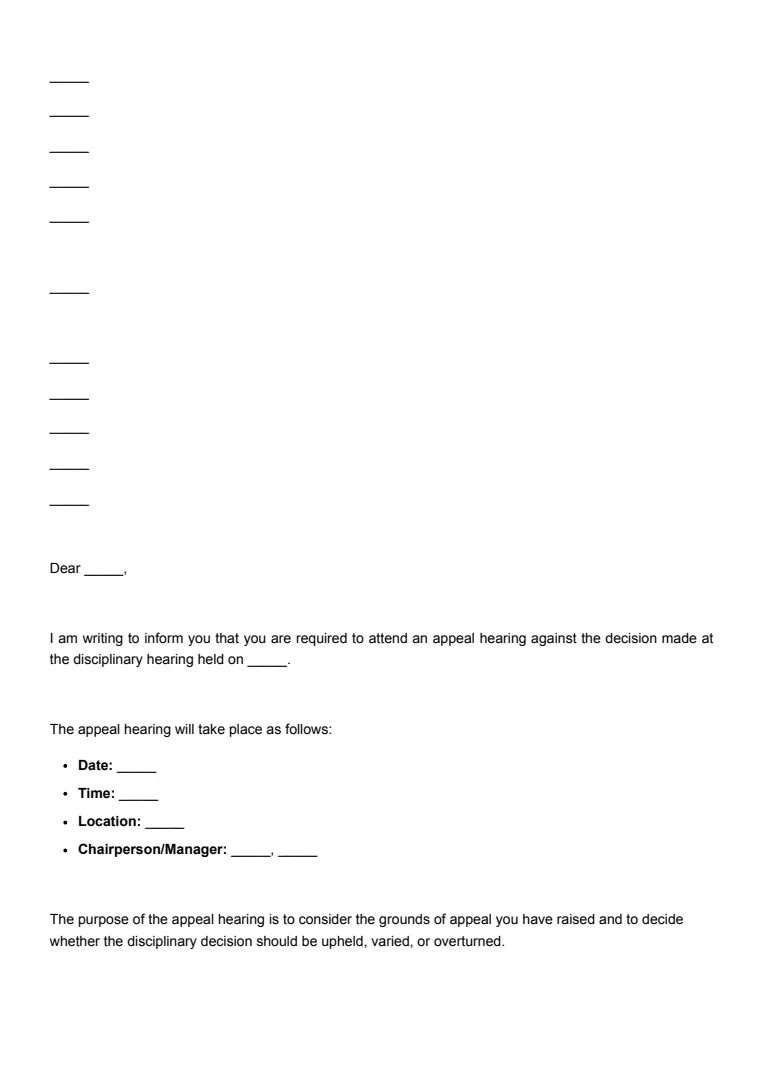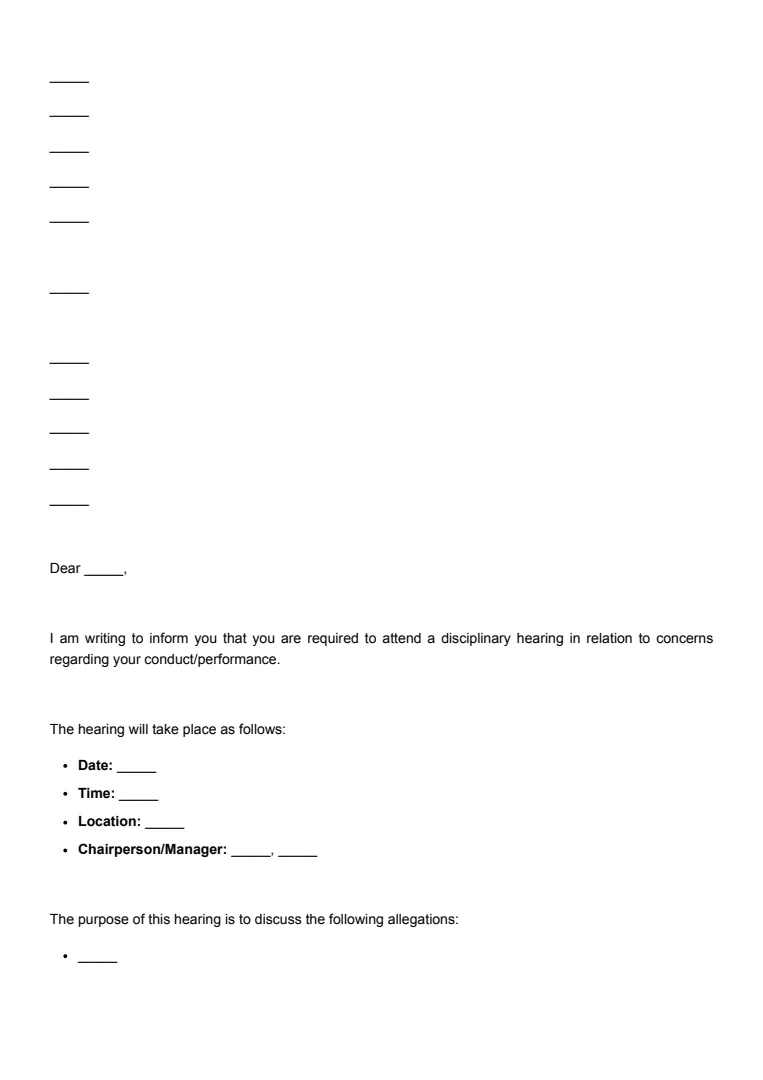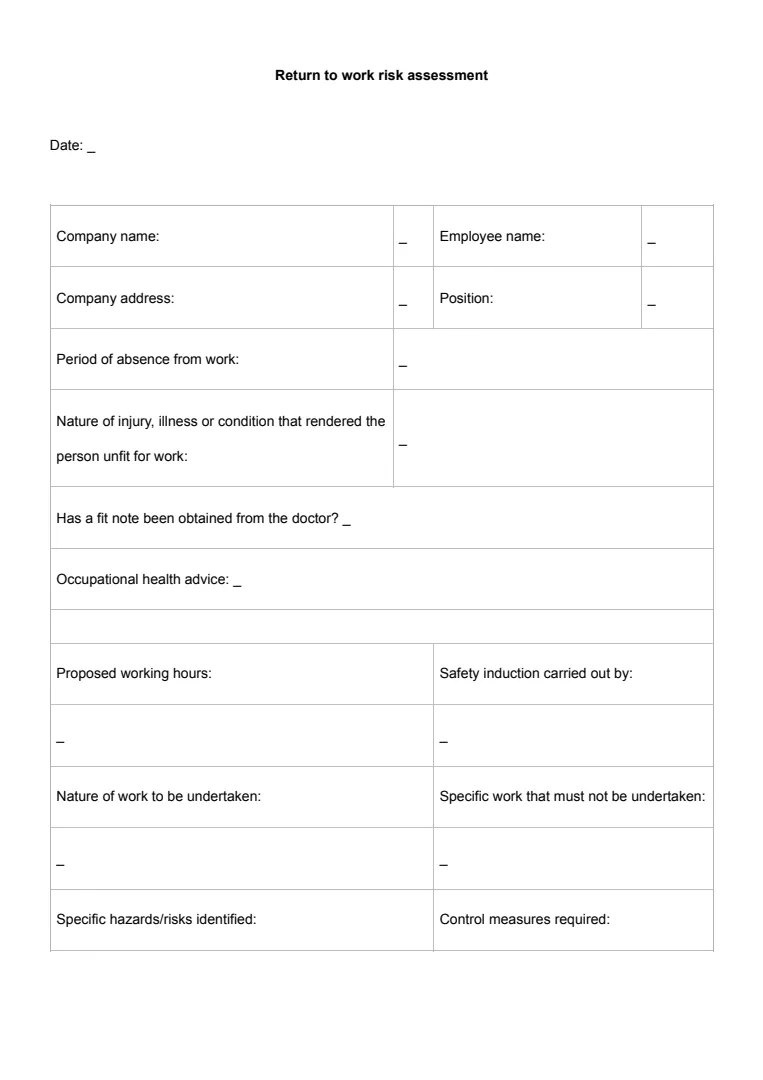What Is a Disciplinary Outcome Letter?
A disciplinary outcome letter is a formal document issued by your employer following a disciplinary hearing or investigation.
It tells you the decision that’s been made about your case and what’s expected of you next.
You usually receive this letter after concerns have been raised about your behaviour or performance.
It’s the official way your employer confirms the result, so you’re clear on the outcome.
Common outcomes you might see in the letter include:
- No action taken
- Verbal or written warning
- Final written warning
- Dismissal
- Other actions, like extra training or a change in duties
The letter doesn’t just state the decision. It explains the reasons behind it, the evidence considered, and any next steps.
For example, if you receive a first written warning, the letter will outline what standards you’re expected to meet from now on.
If you have the right to appeal the decision, the disciplinary outcome letter should also inform you of the process for doing so and the deadline for submitting an appeal.
This helps you understand your rights and what you need to do if you disagree with the outcome.
Employers use these letters to maintain clarity and fairness. Having everything in writing helps avoid confusion and gives you a record you can refer back to if needed.
When Is a Disciplinary Outcome Letter Needed?
If you’re an employer or manager, you’ll need to send a disciplinary outcome letter whenever a disciplinary meeting has taken place and decisions have been made about an employee’s conduct or performance.
You can’t skip this stage; once the disciplinary process is complete, you must communicate the outcome clearly to the employee.
This is required even if the result is “no further action”.
Here are some typical situations when an outcome letter is needed:
- The disciplinary hearing has found evidence of misconduct or poor performance.
- You’re issuing a warning (verbal or written) to an employee under your company policy.
- Changes to the employment contract, such as demotion or suspension, are being made as a result of the meeting.
- You decide to dismiss or terminate the employee following the investigation.
- The outcome is an improvement plan, rather than immediate action.
A disciplinary outcome letter is also crucial if the employee wishes to appeal the decision.
It serves as the formal record that outlines what was decided and why, helping you and the employee to understand the next steps.
How to Write a Disciplinary Outcome Letter
As an employer, it’s essential that you provide employees with clear and professional disciplinary outcome letters. You can follow these steps to help ensure this.
Step 1: Format the Letter Professionally
Begin by ensuring the letter is easy to read and properly formatted.
Use your company letterhead or include your organisation’s name and address at the top. Clearly state the date and mark the letter as a formal notice so the employee understands its official nature.
Step 2: Identify the Employee and Hearing Details
Next, identify the employee by name and job title, and specify the details of the disciplinary hearing.
Mention the date of the hearing and provide a brief summary of the allegations or performance issues discussed. This gives the employee clear context for the outcome.
Step 3: State the Outcome of the Disciplinary Procedure
In the main section, explain the decision made. Clearly outline the disciplinary action being taken, whether it’s a verbal warning, first written warning, or final written warning.
Clearly indicate whether the issue pertains to conduct or performance.
Step 4: Outline Any Required Follow-Up Actions
Describe any additional steps the employee is expected to take, such as training, performance improvement plans, or ongoing support.
This shows the organisation’s commitment to improvement and fairness.
Step 5: Provide Appeal Information
If the employee has the right to appeal, explain the grievance or appeal process. Let them know who to contact, how to raise an appeal, and the deadline for submitting it.
This step is essential for maintaining transparency and compliance.
Step 6: Summarise Future Consequences
Finish by summarising the potential consequences if similar issues occur again.
Refer to your company’s disciplinary procedures and be clear about what further action may follow.
Step 7: Close the Letter Formally
Keep the language straightforward and factual throughout the letter.
Sign off with your full name, job title, and contact information.















